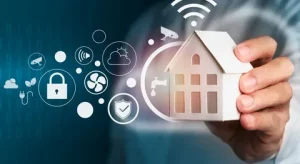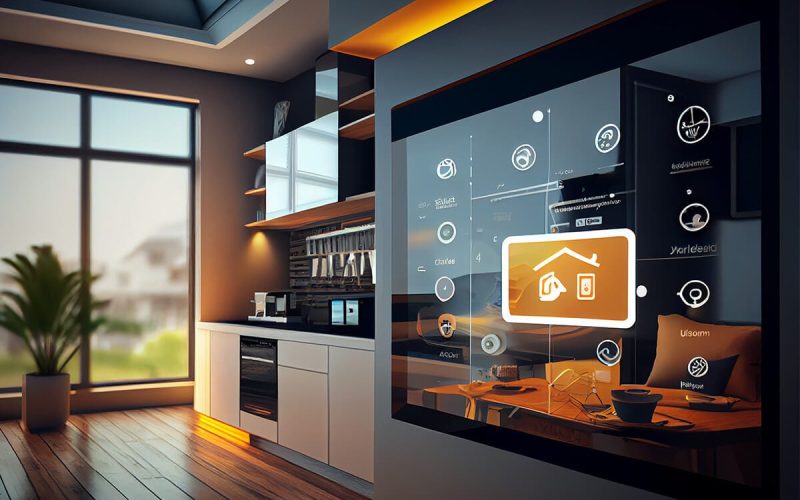Introduction
Imagine living in a house that can talk to you and make life easier every day. Smart homes use advanced IoT devices to transform everyday living. These homes are filled with Next-Gen Technology that connects all your devices. In this article, we explore how smart homes and IoT are changing the way we live. The ideas are simple, fun, and easy to understand for kids and adults. Get ready to learn about a world where technology makes life safer, cozier, and more exciting.
What is Smart Homes?

Smart homes are houses that use home automation to perform tasks automatically. In a smart home, you can control lights, locks, heating, and even appliances with a simple command. These houses use wireless connectivity and connected devices to work together. Imagine turning off the lights or setting the thermostat without leaving your bed. Smart homes make it possible by using next-gen technology. They bring comfort, safety, and energy efficiency to everyday life.
What is IoT?
IoT, or the Internet of Things, is the technology that connects everyday devices to the internet. Through IoT, appliances, gadgets, and even toys can talk to each other. This technology is a key part of smart homes. It helps devices share information and work together seamlessly. For example, your refrigerator can tell you when you’re low on milk, or your thermostat can learn your favorite temperature. IoT creates a network of connected devices that enhance your lifestyle and promote smart living.
How Smart Homes and IoT Work Together

Smart homes and IoT are like best friends. They work together to make daily tasks easier and more fun. When you use home automation, your devices communicate through wireless connectivity. They exchange information to create a smoother, safer environment. For instance, when you leave home, your smart home can automatically turn off the lights, lock the doors, and lower the heating to save energy. This teamwork leads to a more comfortable and energy-efficient lifestyle.
Benefits of Smart Homes and IoT
There are many benefits to having smart homes powered by IoT. First, they make life more convenient. You can control many things with just your voice or a tap on your smartphone. Second, they help save energy by automatically turning off devices when not needed. Third, smart homes offer improved security. With smart locks, cameras, and alarms, you can keep your home safe. Lastly, IoT devices often come with fun features that make daily routines more enjoyable. All of these benefits work together to create a modern technology experience that is both useful and exciting.
Creating a Smart Home on a Budget

You might wonder if smart homes are only for expensive, high-tech houses. The good news is that many IoT devices are affordable. You can start small by upgrading one room at a time. For example, you might begin with a smart thermostat or smart lighting. These devices are not only fun to use but also help you save on energy bills. Over time, you can add more connected devices to create a fully automated home. By taking gradual steps, anyone can enjoy the benefits of smart homes and IoT without spending a lot.
The Future of Smart Homes with Next-Gen Technology
Next-gen technology continues to push the limits of what smart homes and IoT can do. In the future, homes will become even more intelligent and responsive. Imagine a home that learns your daily routine and adjusts settings automatically to suit your mood. Advanced sensors and AI will make your home safer and more efficient. New devices will provide more control over your environment, making your living space truly personalized. With these advancements, the concept of smart living will become a natural part of everyday life, even for young learners.
Enhancing Smart Homes with Energy Efficiency
Energy efficiency is a major part of modern smart homes. Many IoT devices help reduce energy waste by monitoring and managing power usage. Smart homes can adjust lighting and temperature based on whether you are home or away. This not only saves money but also helps protect the environment. By using home automation and wireless connectivity, you can enjoy a cozy home while doing your part to conserve energy. This blend of modern technology and sustainable practices creates a home that is both smart and eco-friendly.
Tips for Embracing Smart Living
Here are some simple tips to help you start your journey towards smart living. Begin by choosing one connected device and learning how to use it well. Practice controlling your devices using voice commands or smartphone apps. Make it a habit to check your energy usage and adjust settings as needed. Explore fun ways to integrate IoT into your daily routines. For instance, try setting reminders for chores or creating a custom schedule for your lights. These small steps will help you build a smarter, more efficient home.
Creating a Safe and Fun Environment for Kids
Smart homes are not just for adults. They can create a safe and fun environment for kids, too. With IoT devices, parents can monitor and control access to the internet, ensuring safe browsing habits. Smart security cameras and doorbells enhance home safety. Kids can also enjoy interactive games and educational apps that work on wireless connectivity. The blend of home automation and modern technology offers creative learning experiences. This balance of fun and safety makes smart living a positive experience for families.
Table: Comparison of Traditional Homes vs. Smart Homes
| Feature | Traditional Homes | Smart Homes with IoT |
|---|---|---|
| Control | Manual switches and controls | Voice commands and smartphone apps |
| Energy Management | Basic, often wasteful | Automated, efficient, and eco-friendly |
| Security | Standard locks and alarms | Smart locks, cameras, and remote monitoring |
| Convenience | Requires physical effort | Automated tasks with minimal effort |
| Future-Readiness | Limited technology integration | Constant updates with next-gen technology |
This table clearly shows how smart homes with IoT offer better control, energy efficiency, security, and convenience compared to traditional homes. It demonstrates why smart living is the way of the future.
The Role of Wireless Connectivity in Smart Homes

Wireless connectivity is the backbone of smart homes. It allows all your devices to connect without messy cables. This technology makes it easy to control everything from one place. With IoT, your devices can communicate over the air, making updates and changes automatically. This seamless connection not only simplifies your daily routines but also enhances the overall modern technology experience. Whether you’re turning on the lights or checking security cameras, wireless connectivity makes it simple and efficient.
Benefits of Home Automation for Daily Life
Home automation brings numerous benefits to everyday living. It helps save time and energy by automating routine tasks. With smart homes, you can schedule when to water the garden, adjust the heating, or even lock the doors. This automation creates a stress-free environment, allowing you to focus on fun activities and family time. Home automation also improves safety, as you can receive alerts if something unusual happens. The integration of IoT and smart homes transforms your living space into a hub of convenience and comfort.
FAQs
Q1: What are smart homes?
A: Smart homes are houses that use home automation and IoT devices to control various tasks automatically, making life easier and more efficient.
Q2: How does IoT work in a smart home?
A: IoT connects devices using wireless connectivity. It allows appliances and gadgets to communicate, share data, and work together seamlessly.
Q3: What are the main benefits of smart homes?
A: Smart homes offer convenience, improved energy efficiency, better security, and enhanced modern technology experiences for families.
Q4: How can home automation save energy?
A: Home automation uses sensors and smart controls to adjust lighting and temperature based on occupancy, reducing wasted energy and lowering bills.
Q5: Are smart homes safe for kids?
A: Yes, smart homes can create a safe environment with smart security systems and parental controls, while also offering fun, educational tech experiences.
Conclusion
Smart homes powered by IoT are transforming living spaces with Next-Gen Technology. They offer convenience, energy efficiency, and enhanced security. With home automation and wireless connectivity, everyday tasks become easier, and your home becomes smarter. These innovations bring fun and safety for both kids and adults, paving the way for a bright, connected future. Embrace smart living to enjoy a modern, efficient, and secure home.











